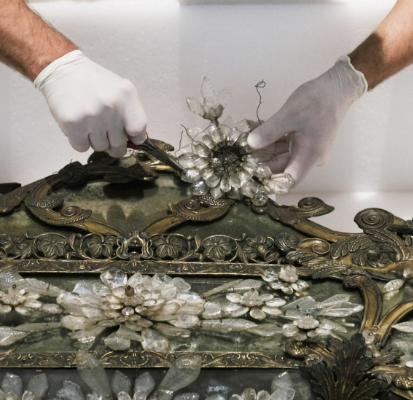The laboratory works on many types of objects and materials, coming from different eras and contexts. He deals with archaeological materials, participates in excavations, works on works of ancient and modern decorative art, furnishings, objects of use and contemporary design, historic stained glass windows.
The activities take place both in the laboratory and outdoors (museums, archaeological sites, monuments) with restoration, monitoring and maintenance of artifacts and collections.
The stained glass windows and historic chandeliers are among the areas of specialization of this sector.
In addition, the laboratory has developed specific methods to conserve contemporary art, addressing the challenges of open-air works.
Director of Laboratories
Michela Cardinali
Deputy Director of Laboratories
Roberta Genta
Area Manager
Marco Demmelbauer
Coordinator
Maria Gargano
Restorers
Paola Dalla Torre
Art historian
Marianna Ferrero
CASE STUDY
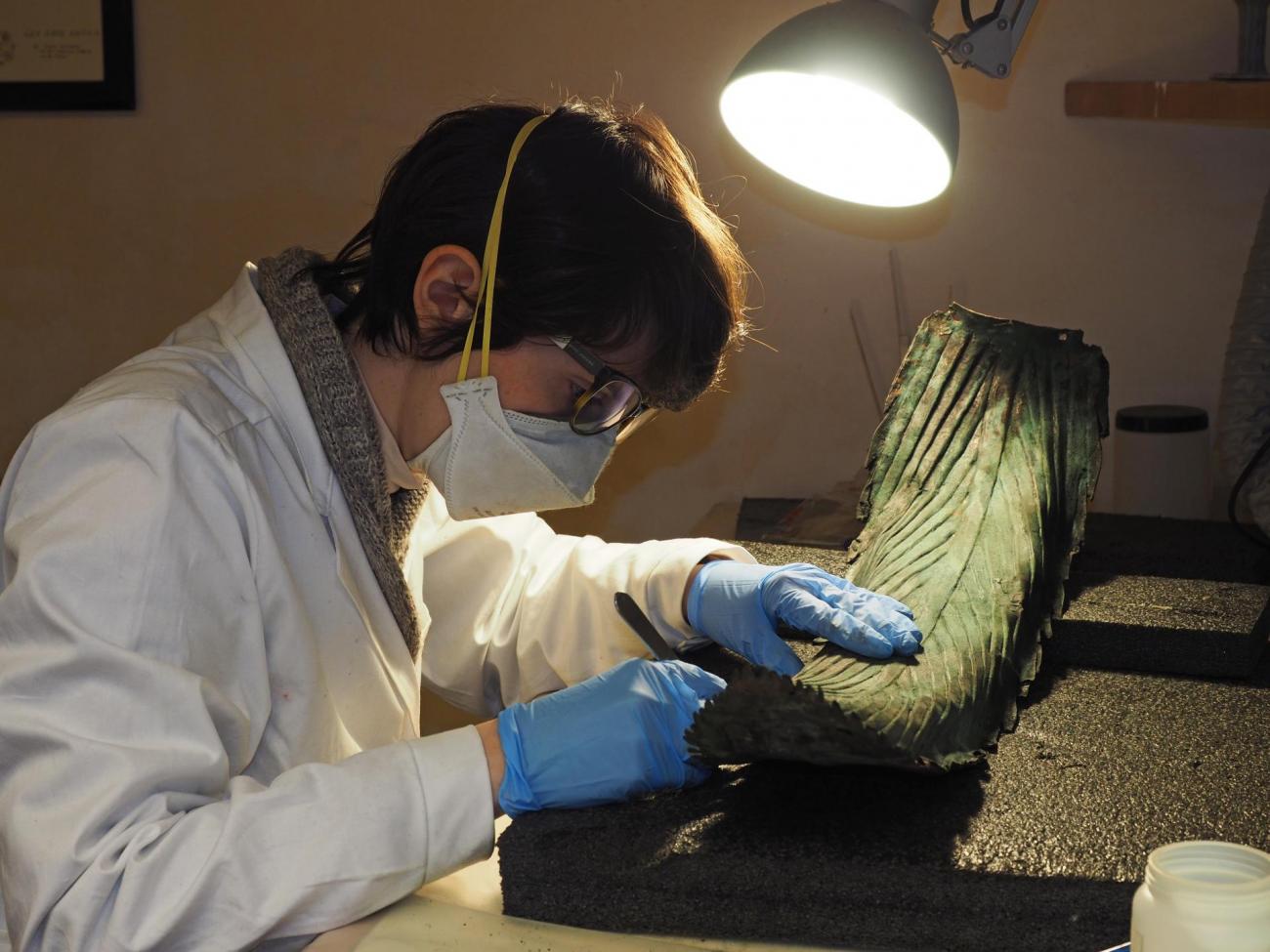
Sculpture, fountain depicting a Palm
Copper alloy, 1618
Milan, Veneranda Biblioteca Ambrosiana
CASE STUDY
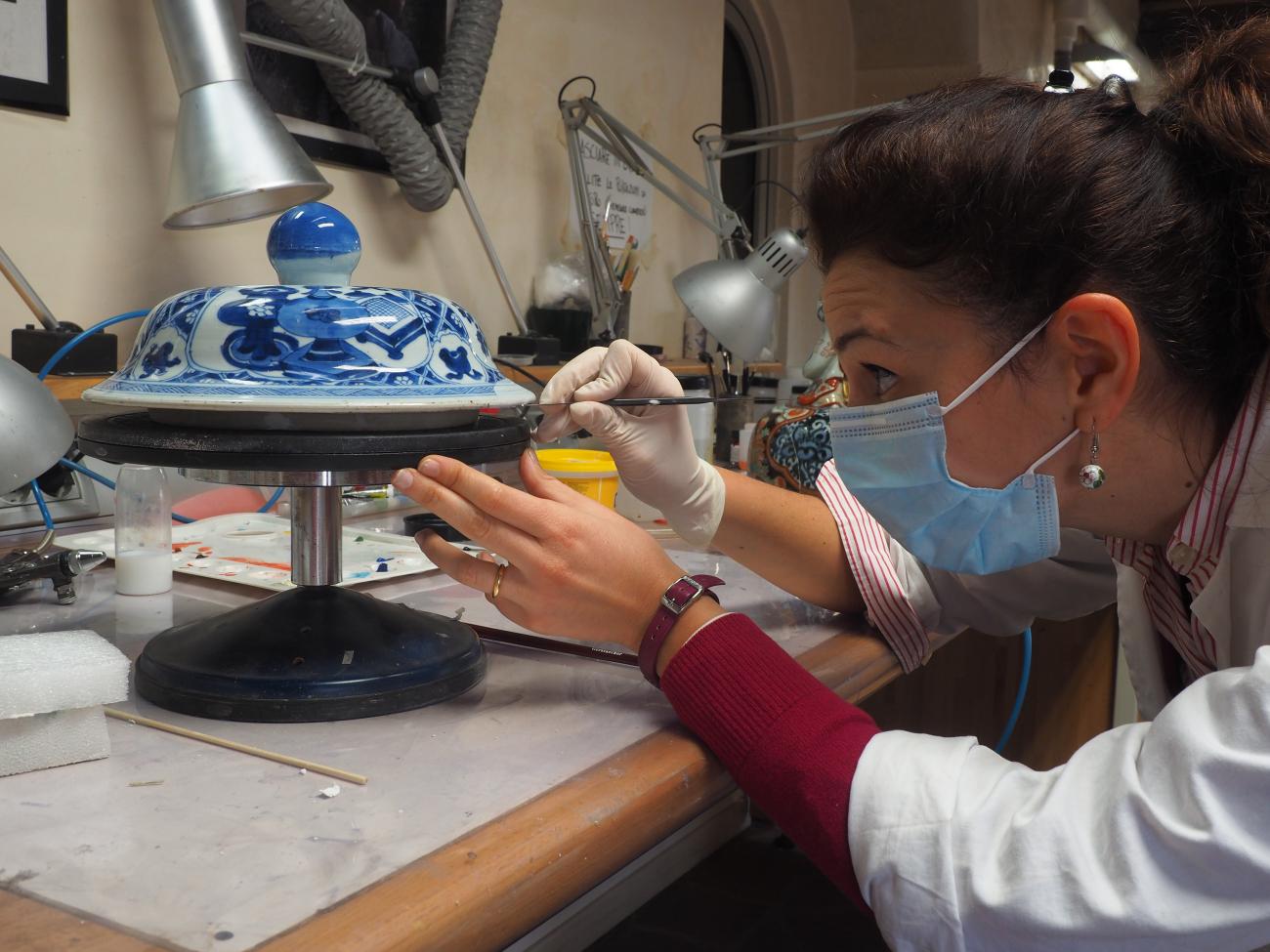
MUDEC – Museum of Cultures, Milan
Museum heritage
MUDEC – Museum of Cultures, Milan
CASE STUDY
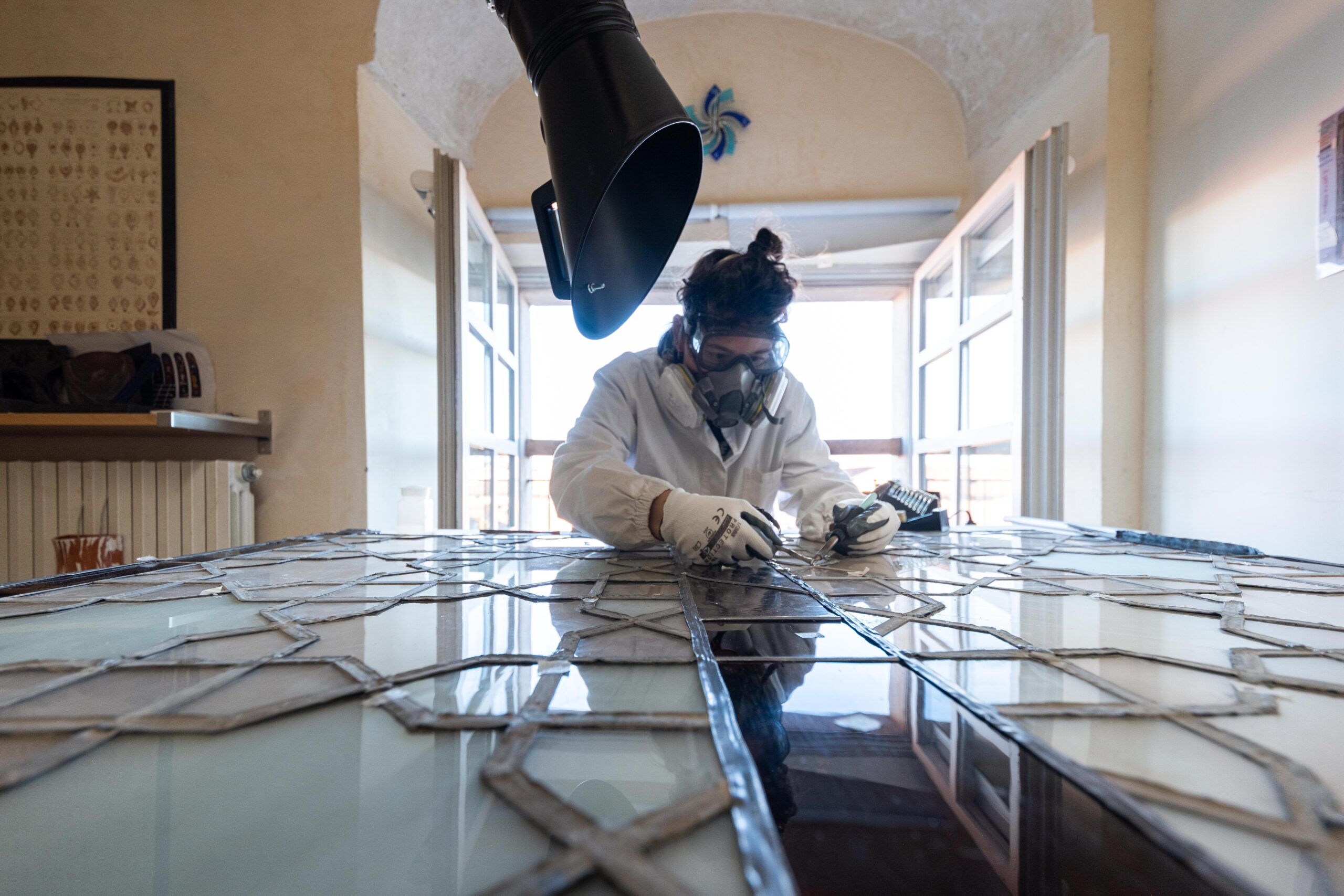
Giuseppe Bertini, Guglielmo Botti, Tito Gordini, Charles–Laurent Maréchal, Fra Marcellino Le Forestier
Painted windows, mid-nineteenth century
Pisa, Baptistery
CASE STUDY
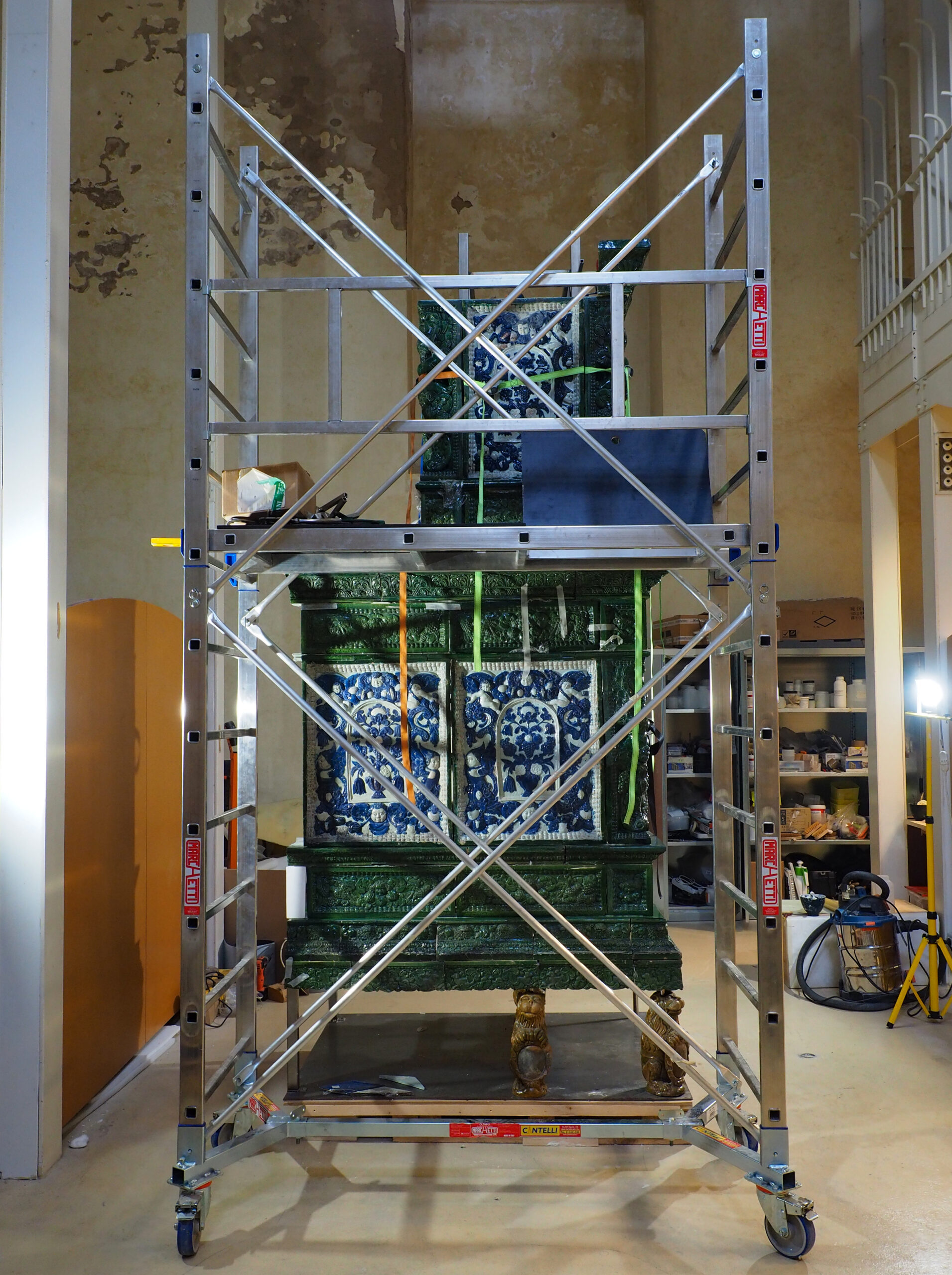
Ceramic stove
15th-16th century
Munich, Trausnitz Castle
The work completed on the stove in 2023 was the culmination of a long restoration involving several generations of restoration students with annual summer construction sites organised at the Residenz Museum in Munich, for a total of around 8 000 hours of work.
The artifact is composed of over 200 tiles that form a monumental stove about 3.5 meters high; In 1961, the building was completely destroyed by a fire that affected a large part of Trausnitz Castle where it was kept.
Over the course of seven years, the JRC carried out the search for attacks, the cleaning, the gluing of the thousands of small fragments and the formal and pictorial reintegration of the recomposed panels. Finally, all the elements were transported to the JRC in 2021 to design and build a complex support system that made it possible to relocate the restored stove to the Castle of origin.







